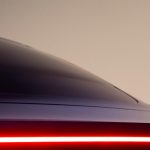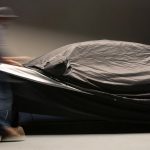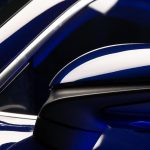

News
Porsche shares production Taycan teaser, hints at ‘Netflix-type’ streaming feature
With the Taycan’s formal unveiling just a day away, Porsche has released a series of images that feature, for the first time, a non-camouflaged, production version of the upcoming all-electric sports car. While the vehicle’s full look still remains a mystery, several aspects of the car, such as its silhouette and its headlights, hint that the Taycan will likely be very similar to the concept car that inspired it: the Mission E sedan.
In a post on its website, Porsche France stated that the Taycan’s photo session was conducted with care, particularly as full images of the vehicle must be kept secret before its official unveiling tomorrow. Pictures are also examined, evaluated, and if necessary, readjusted on the set.
- (Credit: Porsche)
- (Credit: Porsche)
- (Credit: Porsche)
The Porsche Taycan’s production version as teased in a recent photoshoot. (Credit: Porsche)
To state that the Taycan will be Porsche’s most important vehicle in decades will not be an exaggeration. Being a car that is designed to blaze a trail for the company as it enters the electric era, the Taycan has to appeal both to new owners and Porsche’s longtime customers alike. Maintaining this delicate balance is no small feat, as the Taycan would need to be bleeding edge in terms of tech, but still familiar enough that longtime Porsche fans will feel right at home when they step inside the vehicle.
This could be seen in the way the Taycan’s dashboard is laid out. Porsche opted for a more touch-enabled interface for the Taycan, with the vehicle being equipped with as many as five screens. Yet, looking at the Taycan’s futuristic dash, it is difficult to not notice that the entire section of the all-electric car is inspired by the legendary 911, from its rounded gauges to the position of its steering wheel.
- (Credit: Porsche)
- The production Porsche Taycan at its first official photoshoot. (Credit: Porsche)
The Porsche Taycan’s production version as teased in a recent photoshoot. (Credit: Porsche)
Considering that the Taycan is equipped with several displays, the company notes that the vehicle will be loaded to the teeth with multimedia capabilities. Oliver Fritz, Porsche’s director of driver experience, noted in a statement to Automotive News that the vehicle’s cockpit creates opportunities for extensive multimedia use. According to Fritz, one such application would be the addition of “Netflix-type video streaming” features for the Taycan. “We are working on the video use case, but we want to make it safe,” Fritz said.
The Porsche exec added that the company actually thought of putting a web browser on the Taycan, similar to Tesla’s electric cars. The feature was eventually abandoned, as the company figured that the best way for passengers to browse the web would be through their mobile devices. “Other OEMs offer web browsers with a lot of security on the back end. We don’t think that’s actually the way we want to go. If someone really wants to browse web pages, doing it on the smartphone probably is a better way,” he added.
The production version of the Porsche Taycan is set to be formally unveiled in three countries tomorrow; one in Canada, one in Germany, and another in China. The event will begin on September 4, 2019 at 9 a.m. EST.

Elon Musk
Elon Musk and Tesla AI Director share insights after empty driver seat Robotaxi rides
The executives’ unoccupied tests hint at the rapid progress of Tesla’s unsupervised Robotaxi efforts.

Tesla CEO Elon Musk and AI Director Ashok Elluswamy celebrated Christmas Eve by sharing personal experiences with Robotaxi vehicles that had no safety monitor or occupant in the driver’s seat. Musk described the system’s “perfect driving” around Austin, while Elluswamy posted video from the back seat, calling it “an amazing experience.”
The executives’ unoccupied tests hint at the rapid progress of Tesla’s unsupervised Robotaxi efforts.
Elon and Ashok’s firsthand Robotaxi insights
Prior to Musk and the Tesla AI Director’s posts, sightings of unmanned Teslas navigating public roads were widely shared on social media. One such vehicle was spotted in Austin, Texas, which Elon Musk acknowleged by stating that “Testing is underway with no occupants in the car.”
Based on his Christmas Eve post, Musk seemed to have tested an unmanned Tesla himself. “A Tesla with no safety monitor in the car and me sitting in the passenger seat took me all around Austin on Sunday with perfect driving,” Musk wrote in his post.
Elluswamy responded with a 2-minute video showing himself in the rear of an unmanned Tesla. The video featured the vehicle’s empty front seats, as well as its smooth handling through real-world traffic. He captioned his video with the words, “It’s an amazing experience!”
Towards Unsupervised operations
During an xAI Hackathon earlier this month, Elon Musk mentioned that Tesla owed be removing Safety Monitors from its Robotaxis in Austin in just three weeks. “Unsupervised is pretty much solved at this point. So there will be Tesla Robotaxis operating in Austin with no one in them. Not even anyone in the passenger seat in about three weeks,” he said. Musk echoed similar estimates at the 2025 Annual Shareholder Meeting and the Q3 2025 earnings call.
Considering the insights that were posted Musk and Elluswamy, it does appear that Tesla is working hard towards operating its Robotaxis with no safety monitors. This is quite impressive considering that the service was launched just earlier this year.
Elon Musk
Starlink passes 9 million active customers just weeks after hitting 8 million
The milestone highlights the accelerating growth of Starlink, which has now been adding over 20,000 new users per day.

SpaceX’s Starlink satellite internet service has continued its rapid global expansion, surpassing 9 million active customers just weeks after crossing the 8 million mark.
The milestone highlights the accelerating growth of Starlink, which has now been adding over 20,000 new users per day.
9 million customers
In a post on X, SpaceX stated that Starlink now serves over 9 million active users across 155 countries, territories, and markets. The company reached 8 million customers in early November, meaning it added roughly 1 million subscribers in under seven weeks, or about 21,275 new users on average per day.
“Starlink is connecting more than 9M active customers with high-speed internet across 155 countries, territories, and many other markets,” Starlink wrote in a post on its official X account. SpaceX President Gwynne Shotwell also celebrated the milestone on X. “A huge thank you to all of our customers and congrats to the Starlink team for such an incredible product,” she wrote.
That growth rate reflects both rising demand for broadband in underserved regions and Starlink’s expanding satellite constellation, which now includes more than 9,000 low-Earth-orbit satellites designed to deliver high-speed, low-latency internet worldwide.
Starlink’s momentum
Starlink’s momentum has been building up. SpaceX reported 4.6 million Starlink customers in December 2024, followed by 7 million by August 2025, and 8 million customers in November. Independent data also suggests Starlink usage is rising sharply, with Cloudflare reporting that global web traffic from Starlink users more than doubled in 2025, as noted in an Insider report.
Starlink’s momentum is increasingly tied to SpaceX’s broader financial outlook. Elon Musk has said the satellite network is “by far” the company’s largest revenue driver, and reports suggest SpaceX may be positioning itself for an initial public offering as soon as next year, with valuations estimated as high as $1.5 trillion. Musk has also suggested in the past that Starlink could have its own IPO in the future.
News
NVIDIA Director of Robotics: Tesla FSD v14 is the first AI to pass the “Physical Turing Test”
After testing FSD v14, Fan stated that his experience with FSD felt magical at first, but it soon started to feel like a routine.

NVIDIA Director of Robotics Jim Fan has praised Tesla’s Full Self-Driving (Supervised) v14 as the first AI to pass what he described as a “Physical Turing Test.”
After testing FSD v14, Fan stated that his experience with FSD felt magical at first, but it soon started to feel like a routine. And just like smartphones today, removing it now would “actively hurt.”
Jim Fan’s hands-on FSD v14 impressions
Fan, a leading researcher in embodied AI who is currently solving Physical AI at NVIDIA and spearheading the company’s Project GR00T initiative, noted that he actually was late to the Tesla game. He was, however, one of the first to try out FSD v14.
“I was very late to own a Tesla but among the earliest to try out FSD v14. It’s perhaps the first time I experience an AI that passes the Physical Turing Test: after a long day at work, you press a button, lay back, and couldn’t tell if a neural net or a human drove you home,” Fan wrote in a post on X.
Fan added: “Despite knowing exactly how robot learning works, I still find it magical watching the steering wheel turn by itself. First it feels surreal, next it becomes routine. Then, like the smartphone, taking it away actively hurts. This is how humanity gets rewired and glued to god-like technologies.”
The Physical Turing Test
The original Turing Test was conceived by Alan Turing in 1950, and it was aimed at determining if a machine could exhibit behavior that is equivalent to or indistinguishable from a human. By focusing on text-based conversations, the original Turing Test set a high bar for natural language processing and machine learning.
This test has been passed by today’s large language models. However, the capability to converse in a humanlike manner is a completely different challenge from performing real-world problem-solving or physical interactions. Thus, Fan introduced the Physical Turing Test, which challenges AI systems to demonstrate intelligence through physical actions.
Based on Fan’s comments, Tesla has demonstrated these intelligent physical actions with FSD v14. Elon Musk agreed with the NVIDIA executive, stating in a post on X that with FSD v14, “you can sense the sentience maturing.” Musk also praised Tesla AI, calling it the best “real-world AI” today.













